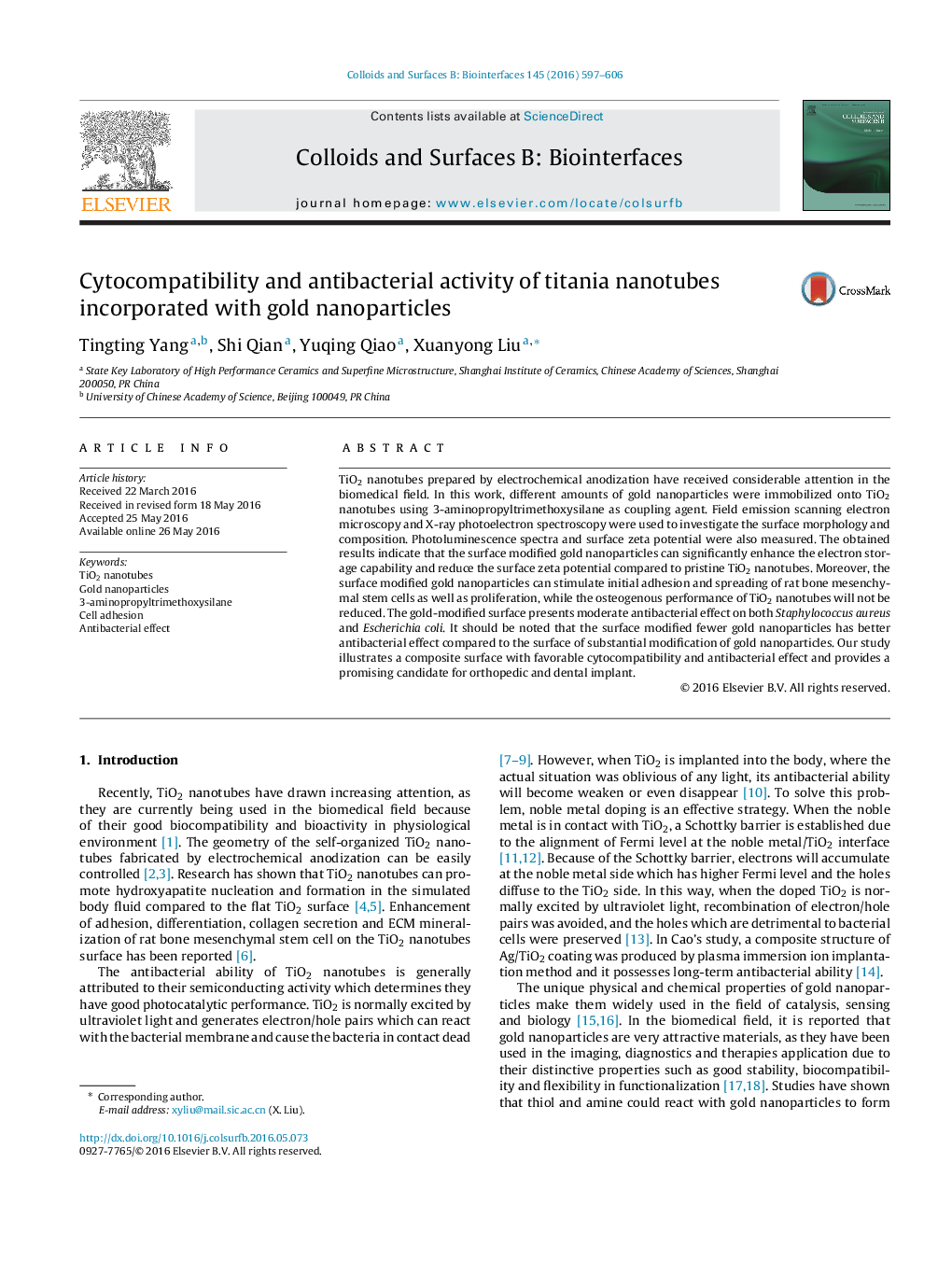| Article ID | Journal | Published Year | Pages | File Type |
|---|---|---|---|---|
| 598985 | Colloids and Surfaces B: Biointerfaces | 2016 | 10 Pages |
•Gold nanoparticles are anchored on TiO2 nanotubes by electrostatic self-assembling.•The gold-modified TiO2 nanotubes exhibited excellent cytocompatibility.•The gold-modified TiO2 nanotubes possessed moderate antibacterial activity.
TiO2 nanotubes prepared by electrochemical anodization have received considerable attention in the biomedical field. In this work, different amounts of gold nanoparticles were immobilized onto TiO2 nanotubes using 3-aminopropyltrimethoxysilane as coupling agent. Field emission scanning electron microscopy and X-ray photoelectron spectroscopy were used to investigate the surface morphology and composition. Photoluminescence spectra and surface zeta potential were also measured. The obtained results indicate that the surface modified gold nanoparticles can significantly enhance the electron storage capability and reduce the surface zeta potential compared to pristine TiO2 nanotubes. Moreover, the surface modified gold nanoparticles can stimulate initial adhesion and spreading of rat bone mesenchymal stem cells as well as proliferation, while the osteogenous performance of TiO2 nanotubes will not be reduced. The gold-modified surface presents moderate antibacterial effect on both Staphylococcus aureus and Escherichia coli. It should be noted that the surface modified fewer gold nanoparticles has better antibacterial effect compared to the surface of substantial modification of gold nanoparticles. Our study illustrates a composite surface with favorable cytocompatibility and antibacterial effect and provides a promising candidate for orthopedic and dental implant.
Graphical abstractFigure optionsDownload full-size imageDownload as PowerPoint slide
